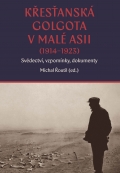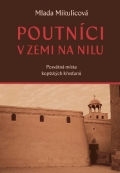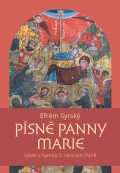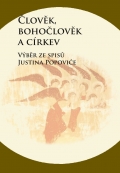Haig Utidjian, PhD, MSc(DIC), CAS(GSMD) was educated at the Universities of Sussex, London and Cambridge, at the Guildhall School of Music and Drama in the UK (where he was the recipient of the Ricordi Conducting Prize), at the Accademia Chigiana in Siena, the Academy of Performing Arts in Prague, and by means of private consultations with Lothar Zagrosek, Carlo Maria Giulini, Vilém Tauský and Josef Kuchinka. He is a professional orchestral and opera conductor and choirmaster of wide experience. He currently serves as Chief Conductor and Chorus Master of the Orchestra and Chorus of Charles University in Prague.
In his native Cyprus, he was a pupil of Archbishop Zareh Aznaworean of blessed memory, and was ordained to the diaconate of the Armenian Church in the year 2000. His research includes work on systems of notation, points of interaction between the Armenian, Byzantine and Ottoman musical traditions, and on new critical editions of the odes of St. Gregory of Narek and of Dvořák’s Mass in D (for the publishing house of Bärenreiter Praha). He curated the Exhibition ‘They who imbibed the effusions of the Spirit: The Art of the Armenian Book through the Ages, held at the Klementinum in Prague in 2016.
He serves on the editorial boards of a number of academic journals and holds an Honorary Affiliation at the Faculty of Philosophy and Arts of Charles University in Prague. Haig Utidjian was recently decorated with the Komitas medal by the Republic of Armenia for his contributions to music and musicology, and with the Yakob Mełapart medal by the National Library of Armenia.
Ivan Moody - Haig Utidjian, Tntesean and the Music of the Armenian Hymnal
(Pro Oriente Volume 43), Pavel Mervart 2017, ISBN 978-80-7465-304-9, 228 pp.
Haig Utidjian, who is both musicologist and practising liturgical musician, has, over the past decade or so, established himself as probably the leading scholar in Armenian sacred musicology, with an enviable list of publications to his name. He has also published much of his work in English, thereby making accessible an entire world of chant and liturgy which would otherwise have passed under the radar of most Western scholars.
The present book is no exception, and indeed, in the Tntesean Hymnal it discusses something that even Armenian scholars have not examined closely until now. Utidjian’s Introduction provides an historical overview of the hymnody of the Armenian Apostolic Orthodox Church and the problems raised by the increasing inaccessibility of notation to cantors in combination with the reversion to an oral tradition, something that the early nineteenth-century musicians Hambarjum Limōnčean and Fr Minas Bžškean attempted to remedy by recording at least some of the repertoire in print, though (or, rather, because) they were confronted by a bewildering variety of earlier transcriptions, retranscriptions and recompositions.
The Tntesean Hymnal itself is the work of the Constantinopolitan musician Elia Tntesean (1834-1881), and adopts a different approach, in that it looks to the mediaeval repertoire as part of the establishing of Tntesean’s own notational system. A useful guide is provided to the background of this work, and the polemics associated with its publication, before a highly useful list of neumes, essential for understanding the detail of Utidjian’s subsequent discussion. Thus there follows a chapter on the characteristics of the hymnal itself as regards notation and pitch, the implications for performance practice and Tntesean’s fascinating views on the commonalities between Armenian sacred melodies and the Ottoman maqams (something he recognized but which he found to have been used to an exaggerated extent by a number of church musicians), and much detail concerning variants, musical and metrical approaches, verbal underlay, and the exact contents of the hymnal and implications of the choice to leave certain hymns out of notate them incompletely – “But the fact that it is not complete means that it cannot be considered to be self-sufficient from a liturgical point of view. The matter is of sufficient gravity as to warrant special investigation […]” (p. 92)
That special investigation is taken up further on, with discussion of how to complete the hymnal, but only after the author has made an essential and detailed examination, in Sections 5 and 6, Tntesean’s practice as regards transcription and the consistency or otherwise of his neumatic practice, by means of analysis of combinations of neumes, the treatment of neumatic sequences and other related questions. As Utidjian notes in his conclusion, “We have seen that Tntesean ‘processed’ or even ‘constructed’ melodies in many cases, rather than transcribing whatever he heard; but whilst engaging in such procedures, he was not always entirely consistent in the application of his own principles.” (p. 207). That phrase alone should give the reader an idea of the momentous task that has been attempted here; that it manages to be not only a (beautifully presented) detailed musicological monograph but a text of great fascination and suggestiveness is a tribute both to Haig Utidjian’s palpable musical enthusiasm and his scholarly rigorousness.
(Journal of the International Society for Orthodox Church Music, Vol. 7:1 (2023), Section IV: Reviews, pp. 76–77, ISSN 2342-1258, https://doi.org/10.57050/jisocm.129814)








